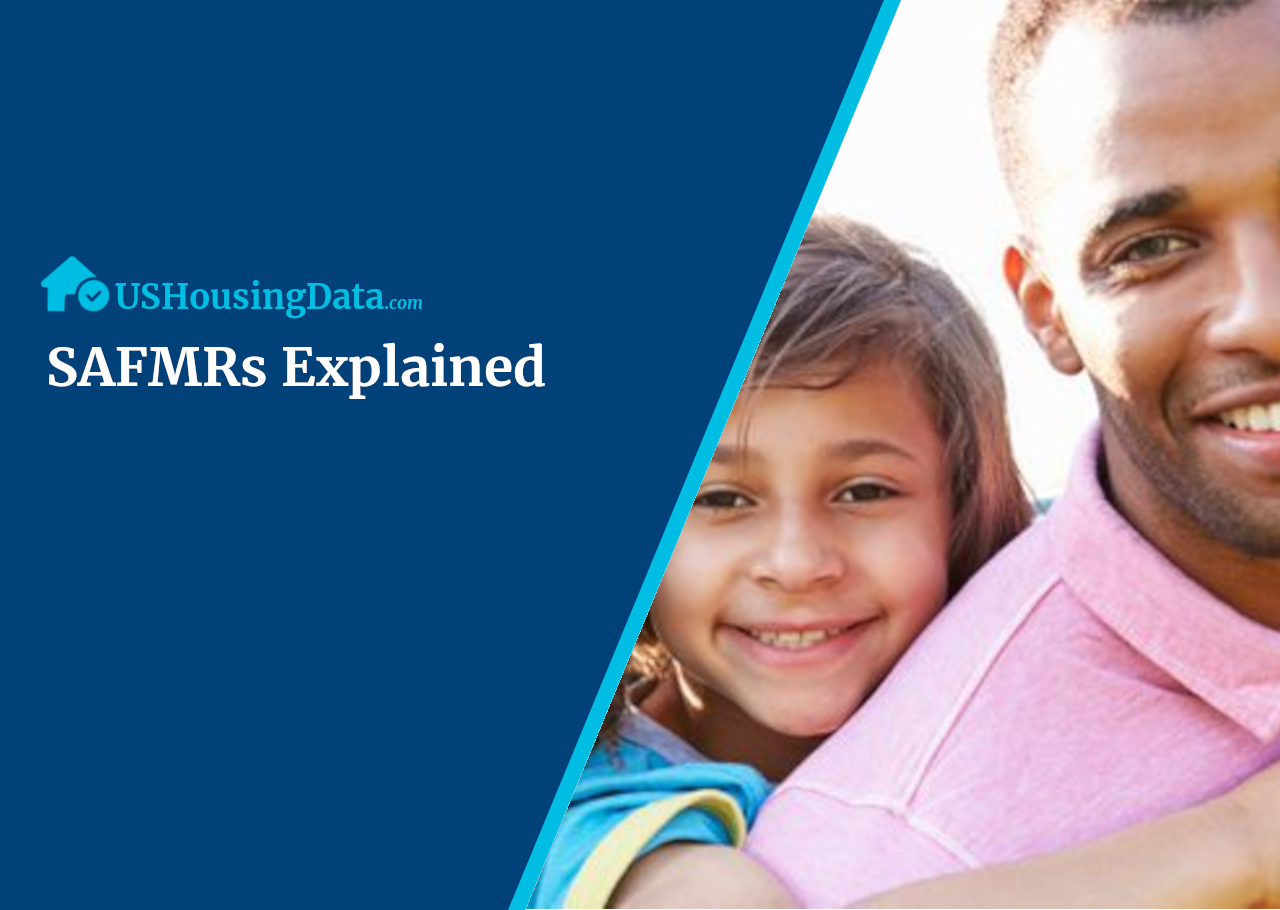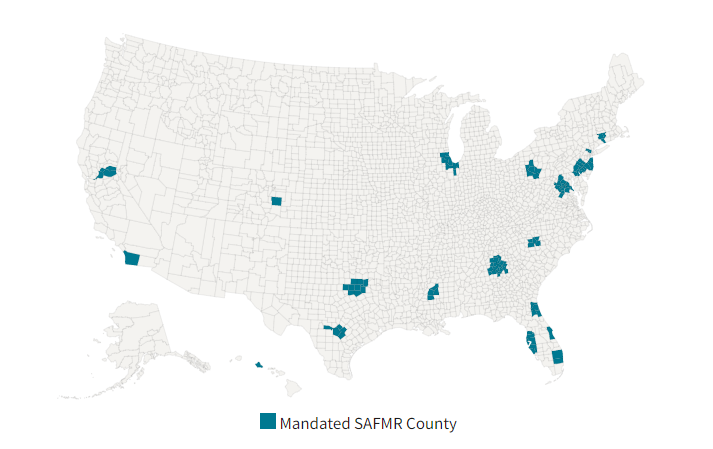
What Are Small Area FMRs?
Small Area Fair Market Rents (SAFMRs) are Fair Market Rents (FMRs) Calculated at the ZIP code level for metropolitan areas. The HUD creates and uses FMRs in the Section 8 Housing Voucher Program. Public Housing Authorities (PHAs) determine the Payment Standard based on these FMRs.
The HUD calculates FMRs for entire metro areas. Unlike FMRs, the HUD calculates SAFMRs at the ZIP code level for Metropolitan Areas. Although the granularity SAFMRs create increases the complexity of Section 8 they provide many distinct advantages over traditional FMRs.
Why SAFMRs?
SAFMRs make decent, affordable housing, in high quality neighborhoods more available to low income families. Rent prices in a metro area may vary from neighborhood to neighborhood. SAFMRs provide more precise values that are closer to the rental market. Large multi ZIP code FMRs are not suitable for areas with high rent variation.
If payment standards were set based on FMRs in areas of high variability it would be difficult to get housing in high cost neighborhoods for low income families. This is because payment standards would not cover the cost of housing in higher quality neighborhoods. This results in high variation areas having large concentrations of low income families living in poor neighborhoods with other low income families.
To combat this HUD published SAFMRs in 2018. SAFMRs give PHAs the means to increase the number of decent, safe, affordable, and accessible areas available to low income families. The PHAs do this by being able to increase payment standards in high cost, opportunity neighborhoods. These Neighborhood offer low income families access to:
- Better jobs
- Higher education quality
- Public transport
- More public services
- Lower crime rates
SAFMR Adoption
Not all areas have SAFMRs. As of 2018, there are 24 metropolitan areas required to adopt SAFMRs. To view an interactive map and get information about specific counties click here to return to the Fair Market Rents Overview page.

- Atlanta-Sandy Springs-Roswell, GA HUD Metro FMR Area
- Bergen-Passaic, NJ HUD Metro FMR Area
- Charlotte-Concord-Gastonia, NC-SC HUD Metro FMR Area
- Chicago-Joliet-Naperville, IL HUD Metro FMR Area
- Colorado Springs, CO HUD Metro FMR Area
- Dallas, TX HUD Metro FMR Area
- Fort Lauderdale, FL HUD Metro FMR Area
- Fort Worth-Arlington, TX HUD Metro FMR Area
- Gary, IN HUD Metro FMR Area
- Hartford-West Hartford-East Hartford, CT HUD Metro FMR Area
- Jackson, MS HUD Metro FMR Area
- Jacksonville, FL HUD Metro FMR Area
- Monmouth-Ocean, NJ HUD Metro FMR Area
- North Port-Sarasota-Bradenton, FL MSA
- Palm Bay-Melbourne-Titusville, FL MSA
- Philadelphia-Camden-Wilmington, PA-NJ-DE-MD MSA
- Pittsburgh, PA HUD Metro FMR Area
- Sacramento--Roseville--Arden-Arcade, CA HUD Metro FMR Area
- San Antonio-New Braunfels, TX HUD Metro FMR Area
- San Diego-Carlsbad, CA MSA
- Tampa-St. Petersburg-Clearwater, FL MSA
- Urban Honolulu, HI MSA
- Washington-Arlington-Alexandria, DC-VA-MD HUD Metro FMR Area
- West Palm Beach-Boca Raton, FL HUD Metro FMR Area
There are three types of SAFMR Adoption:
- Designated SAFMR PHAs - HUD Mandated areas based on criteria
- Opt-In SAFMR PHAs - Voluntary PHA SAFMR usage for all areas under that PHA
- Exception payment standards - Voluntary PHA SAFMR usage only for certain areas
Criteria for Mandated SAFMR Metropolitan areas
The HUD only mandates SAFMRs for metropolitan areas that meet certain criteria:
- There must be over 2500 Housing Choice Vouchers under lease
- Over 20% if the areas rental units are in zips with SAFMRS above 110% of the metro FMR
- Voucher families living in concentrated low-income areas make up at least 25% of all renters in the area
- Rental Vacancy rate for the Metropolitan area must be higher than 4%
Why don’t all PHAs use SAFMRs instead of FMRs?
SAFMRs have advantages in areas of high price variability but they are not without their drawbacks. For a PHA to opt-in to using SAFMRs they must submit documents to the HUD that take time to process. SAFMRs also increase Section 8 complexity and lead to increased administrative costs for PHAs. Many employees must retrain to work with SAFMRs. SAFMRs are only suitable for areas where cost variation and the number of Voucher families is high enough to be worth the increase in cost and complexity.
Why Are SAFMRs Important
SAFMRs are important because they help make high quality neighborhoods available to low-income families. These high opportunity neighborhoods give voucher families chances at better education and higher earning jobs. SAFMRs help low-income families improve their lives, escape poverty, and reduce their involvement with crime.
Landlords can also benefit from SAFMRs. In areas with a high number of housing voucher families and high housing vacancy SAFMRs can lead to more tenants. If metro area FMRs were in place in areas of high poverty, high housing cost variation, and high vacancy landlords would have trouble finding tenants who could make payments on time. SAFMRs help PHAs cover more of what the rental property is actually worth. This gives rental owners a form of guaranteed payments.
How Can You Use SAFMRS?
To qualify for section 8 you must:
- Have an anual income within one of the Income Limit categories for your area
- Be a U.S. citizen
- Have no eviction history
- complete the housing-choice voucher application used by your PHA
- Submit any supporting documents requested by your PHA
- If you are approved for section 8 you will be placed on a waiting list
Conclusion
Whether you are a rental owner or tenant, SAFMRs make section 8 more effective. SAFMRs lead to more tenants for rental owners and better lives for vouchers through opportunity and quality of living.
Alan Reed

Alan is a real estate investor based in Northeast Pennsylvania with experience renovating and operating everything from single-family rentals to strip malls and storage facilities.
June 03, 2022 (Updated April 22, 2024)
